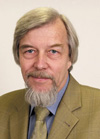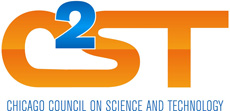|
Tuesday, Oct. 28
10:45 a.m.
Town-Hall Meeting - Auditorium
Speaker: Rolf-Dieter Heuer, DG Designate, CERN
Title: 10-minute Presentation and 60-minute Q&A Session
3:30 p.m.
DIRECTOR'S COFFEE BREAK - 2nd Flr X-Over
THERE WILL BE NO ACCELERATOR PHYSICS AND TECHNOLOGY
SEMINAR TODAY
Wednesday, Oct. 29
3:30 p.m.
DIRECTOR'S COFFEE BREAK - 2nd Flr X-Over
4 p.m.
Fermilab Colloquium - One West
Speaker: Thomas K. Gaisser, University of Delaware
Title: IceCube-A New Detector for Neutrino Astronomy and Particle Astrophysics
Click here for NALCAL,
a weekly calendar with links to additional information. |
|
Tuesday, Oct. 28
- Chicken & rice soup
- *Low carb burger
- Beef stroganoff
- Smart cuisine: chicken lemon
- Peppered beef
- Assorted sliced pizza
- Chicken tostada
*Denotes carb-restricted alternative
Wilson Hall Cafe Menu |
|
Wednesdsay, Oct. 29
Lunch
- Magnolia chicken jambalaya
- Chocolate pecan bourbon tart
Thursday, Oct. 30
Dinner
- Closed
Chez Leon Menu
Call x4598 to make your reservation. |
|
|
Town hall meeting with Rolf Heuer at 10:45 a.m. today
 |
| Rolf-Dieter Heuer |
Fermilab will host an open town hall meeting with Rolf-Dieter Heuer, the designated director general of CERN, today at 10:45 a.m. in Ramsey Auditorium, followed by a reception in the WH Art Gallery (2nd floor) at noon. The town hall meeting includes a 10-minute talk by Heuer and a 60-minute Q&A session. Everyone is invited. Heuer would like to meet with all members of the U.S. particle physics community.
|
C2ST increases science awareness, offers programs

The Chicago Council on Science and Technology (C2ST), provides an increasing awareness of the active role that science and technology plays in society. The new Chicago organization offers programs, conferences and educational initiatives related to emerging science and technology.
C2ST was developed and is led by a unique combination of Chicagoland universities, museums, national laboratories and industry. Each month C2ST sponsors discussions, programs and leadership dialogue among scientists, institution representatives and the public at various scientific and educational locations throughout the city. Lectures are free to members. Non-members can check pricing online.
C2ST's continued Fall 2008 schedule:
Nov. 3- "Agriculture's Role in Energy Future," with Dr. Mark Matlock, senior VP of research, Archer Daniels Midland (ADM).
Nov. 20- "The Digital Divide: Why Do We Care?" led by Robert R. Fairlie, professor of economics at The University of Santa Cruz. A panel discussion including Hardik Bhatt, CIO and commissioner of department of innovation and technology, City of Chicago and Eszter Hargittai, associate professor of communication studies at Northwestern University.
Dec. 10- "The Next Generation of Biomedical Research: Implications for the Future of Healthcare," by Dr. Mary Hendrix, president and scientific director - Children's Memorial Research Center.
C2ST is funded in part by the MacArthur Foundation, Exelon Corporation and the Chicago Community Trust. To find out more about upcoming programming or to become a member please visit the C2ST Web site, e-mail at info@c2st.org or call (312)503-0891.
|
Atom smashers at work
From MSNBC CosmicLog, Oct. 27, 2008
Europe's Large Hadron Collider is out of order until next year, but that doesn't mean the atom-smashing scientists and engineers behind the world's biggest atom smasher are taking the winter off. Last week, U.S. scientists involved in LHC research gathered at Fermilab, just outside Chicago, to talk about what has to be done between now and next spring - and what they expect to do once the collider is open for business again.
Friday's first-ever meeting of the US-LHC Users Organization gave scores of researchers an opportunity to hear what their colleagues on experimental teams were doing, share practical tips for working at the site on the French-Swiss border, and commiserate over the electrical mishap that forced a shutdown of the LHC just days after its much-celebrated startup on Sept. 10.
The European Organization for Nuclear Research, known by its French acronym CERN, has provided bits and pieces of information about the mishap, which began with a faulty electrical connection between magnets in the collider's underground tunnel and opened up a serious breach in the helium cooling system.
Read more
|
|
|
A great celebration
 |
| Pier Oddone |
Yesterday on the Stanford Campus we celebrated the achievements of the B-factory over the last 20 years from conception to brilliant success in physics and finally to its last production run earlier this year. The B-factory shut down as a consequence of the terrible budget cut of last year, in part to allow the Tevatron to continue running.
This was the second celebration this year to follow the closure of a very productive facility, first CESR at Cornell and then the B-factory at SLAC. There is much to celebrate, because these facilities helped define a powerful national program. There is also much to worry about, because we close facilities prematurely without having built the new national facilities to ensure success in the future.
Putting concerns aside, it was a great day to reflect on the extraordinary trajectory for PEPII and BaBar. They took relatively little time to launch, with only six years from initial conception to the announcement of their start by President Clinton in 1993. Construction also took a relatively short time, from 1994 to 1999, when BaBar moved into the beam and started taking data. The physics runs and many discoveries followed, but did not even last for a full 10 years. From this trajectory one might imagine they were simple projects. In fact, they were anything but simple. PEP II was a new and untried configuration for a collider, operating at unprecedentedly large beam currents, with potentially nasty beam instabilities and backgrounds--myriad opportunities for making mistakes. The detector, built by a broad international collaboration, had demanding specifications and a difficult geometry to accommodate tracking chambers, a novel particle identification system, calorimeters and machine components close to the interaction point. That all of this worked and worked well is a tribute to the teams that built both the accelerator and the detector.
The great physics productivity of the B-factory included the discovery and measurement of CP violation parameters in the decay of B mesons, the most accurate determination of CKM parameters, discovery of new particles and more than 300 publications. One could discuss the many results and how much the B-factories taught us about quarks, but the most eloquent tribute was the message read at the conference from this year's Nobel Prize winners, Professor Kobayashi and Professor Maskawa. They would not have received the prize, they wrote, but for the measurements done by the B-factories.
|
|
Have a safe day!
Free Webcast on pre-diabetes 10/29
A free Lunch & Learn Webcast, titled "Pre-diabetes - why small lifestyle changes matter" will take place from noon to 12:45 p.m. on Wednesday, Oct. 29. You can view the presentation on your computer while listening by phone. Jennifer Tennant, Advance Practice Nurse, Rush Health Associates, will give the Web cast. More information
PowerPoint 2003 multimedia, advanced drawing techniques course Nov. 11
A course on multimedia and advanced drawing techniques for PowerPoint 2003 will take place on Nov. 11. Attendees can learn to apply multimedia techniques to a PowerPoint presentation to create a slide show that will appeal to any audience. Learn more and enroll
Scottish Country Dancing Tuesday
Scottish Country Dancing will take place in Kuhn Barn in the Fermilab Village on Tuesday, Oct. 28. Instruction begins at 7:30 p.m. Newcomers are always welcome. Most dances are fully taught and walked through. You do not need to come with a partner. For more information call (630) 840-8194 or (630) 584-0825 or e-mail.
Additional Activities
|
|